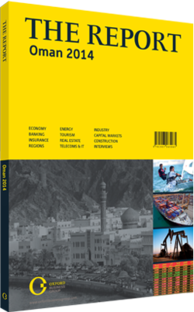Kenneth Macfarlane, Country Senior Partner, PwC, on rising to the challenge

As Oman’s manufacturing sector develops, it will need to adopt new strategies to overcome challenges and gain a competitive edge. Oman’s economy has been dependent on oil and gas exploration and related industries for the past several decades. While this sector has attracted significant investment and provided for the modernisation of infrastructure, Oman is mindful that oil and gas reserves are finite and that current oil wealth must be used in part to fund economic diversification. To that end, the Omani government has envisioned and is actively pursuing a development plan that focuses on diversification, industrialisation and privatisation, with the objective of reducing the oil sector’s contribution to GDP to 9% by 2020.
The Omani manufacturing sector offers great potential in this respect and the government has been very supportive in fostering its development. Tax exemptions are available for Omani firms that process raw materials, as well as those that export locally manufactured goods. Incentives also include Customs benefits, competitively priced plots of land in designated industrial areas and free trade zones. Additionally, the country now has sufficient infrastructure to support the development of manufacturing.
Below are some of the challenges and strategies as outlined in the PwC publication “Preparing for growth: Manufacturers adopt new strategies for growth and competitive edge”. As in other countries, manufacturers in Oman will face challenges that include:
• Raw materials volatility: Most raw materials for manufacturing are imported and therefore are subject to significant supply and price volatility.
• Competitive threats: New market entrants and business consolidations will bring about increased competition, along with pricing pressures.
• Increasing complexity: As the manufacturing sector expands, regulations are likely to become more complex and compliance more costly.
• Search for talent: There is always competition among enterprises for top talent. This will also be the case in Oman as manufacturers seek to attract the best management and develop the local labour force. Omani manufacturers will need agility and the right strategy to compete effectively in local, regional and global marketplaces. Three factors are paramount:
• Innovation: The ability to innovate and quickly commercialise successful innovations is crucial. Product management, engineering know-how and technology are of critical importance, as well as the process es and technology that manufacturers adopt. Competitive threats can be countered through product and service innovation or maximisation of efficiency through operational improvement. Technology now allows manufacturing to occur remotely from engineering. Finally, manufacturers need to protect innovation and intellectual property through the relevant legal and commercial processes.
• Leveraging the global operations footprint: Globalisation has resulted in many companies having a complex footprint of plants, research and development centres, distribution and after-market service centres. With these complex supply chains, many firms struggle to balance local production and supply chain execution with global management control and decision-making. Manufacturers need to be agile to face this challenge and stay ahead of the competition, which means being able to balance their global scale with the right level of customer proximity by scaling capacity up and down based on global, regional and local demand.
• Adaptable operation model: All manufacturing enterprises face a complexity of legal and tax regulations, which worsen when involving inter-company transactions in multiple territories. Manufacturers generally have two options: They can retain existing tax and legal structures and transfer pricing policies and incur unnecessary costs that may compromise their ability to compete, or they can adapt their operating model to reflect new strategic priorities, thereby creating sustainable and long-term benefits.
You have reached the limit of premium articles you can view for free.
Choose from the options below to purchase print or digital editions of our Reports. You can also purchase a website subscription giving you unlimited access to all of our Reports online for 12 months.
If you have already purchased this Report or have a website subscription, please login to continue.

